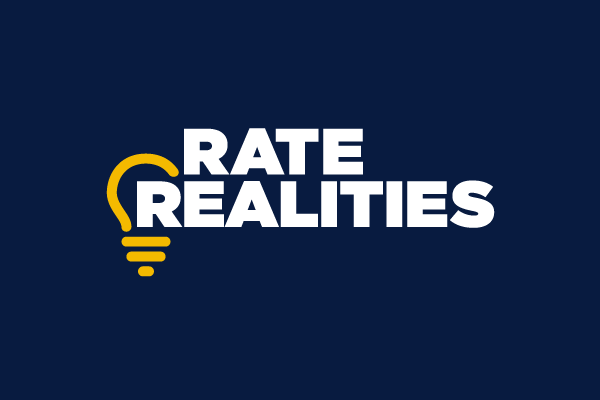Report Shows Nearly 37% of Electric Bills Go to Mandates, Not Delivery
 Last week, the California Chamber of Commerce launched its “Rate Realities” campaign to raise awareness about the true drivers behind California’s electricity costs while highlighting the risks in proposals under consideration by the California Legislature.
Last week, the California Chamber of Commerce launched its “Rate Realities” campaign to raise awareness about the true drivers behind California’s electricity costs while highlighting the risks in proposals under consideration by the California Legislature.
CalChamber also released a new independent analysis of the impact that state policies have on residential electricity bills for California’s three major investor-owned utilities: Pacific Gas & Electric, Southern California Edison, and San Diego Gas & Electric.
The new report by Blue Sky Consulting Group found that 36.5% of the average residential electricity bill covers the cost of state-mandated public purpose programs, renewable energy requirements, wildfire risk mitigation, and the cost shift from rooftop solar customers to non-rooftop solar customers.
“These policy choices are the true cost drivers of the last decade that have led to higher electric bills,” said CalChamber President and CEO Jennifer Barrera. “But rather than confront these costs, lawmakers are considering several proposals that would make things worse, changes that are overly complex and risky and would actually raise bills, jeopardize reliability, and undermine efforts like wildfire prevention and clean energy.”
Policy-Driven Costs
Here’s a breakdown of the 36.5% of an average residential customer’s electric bill attributed to policy-driven costs:
- Approximately 14% is due to Net Energy Metering, which overcompensates rooftop solar users for extra power they send to the grid, and which leaves non-solar customers (often lower-income households) paying more to cover grid maintenance and operations.
- Approximately 13% goes to wildfire risk mitigation, safety, and recovery efforts, including vegetation management, undergrounding power lines, and grid hardening to reduce wildfire risk.
- Approximately 7% supports state-mandated public purpose programs, including energy efficiency efforts, discounts for low-income families, incentives to reduce electricity use during peak demand, and funding for older power plants like Diablo Canyon to help maintain grid reliability.
- Approximately 3% of the bill results from the Renewables Portfolio Standard and the state’s cap-and-trade program. These mandates require utilities to purchase renewable power from sources like wind, solar, and hydroelectric, often at above-market rates.
“While many of these policies and state mandates serve important societal goals,” Barrera said, “California legislators must ask tough questions about whether all are necessary, whether all justify higher electric bills and whether there are alternative ways to pay for worthy programs without placing so much responsibility on electricity customers.”
The campaign includes public education, stakeholder engagement, and outreach to lawmakers urging them to focus on practical, affordability-focused measures that protect consumers from unnecessary rate hikes, maintain grid reliability, and enhance wildfire prevention efforts.
Two Paths
CalChamber’s Rate Realities campaign outlines two possible paths forward.
Tough But Effective Proposals
- Consider funding state-mandated Public Purpose Programs (PPPs) from state resources instead of electricity bills paid by middle-income customers or eliminating some programs.Discount programs:
– California Alternate Rates for Energy program (CARE): Provides bill discounts to qualified customers.
– Family Electric Rate Assistance program (FERA): Provides bill discounts to qualified customers with larger families.
– Percent of Income Payment Program (PIPP): Caps qualified household’s energy bill at 4% of their income.California Schools Healthy Air, Plumbing, and Efficiency Program (CalSHAPE): Provides grants to school districts for plumbing and air conditioning,Electric Program Investment Charge Program (EPIC): Funds research to accelerate the state’s clean energy transition.
- Reduce or shift the cost of residential rooftop solar incentives (Net Energy Metering), which are paid mainly by customers who don’t have solar panels and tend to be lower-income customers.
- Reduce or find alternative funding for the Renewables Portfolio Standard, a state mandate that requires utilities to buy solar, wind and hydroelectric energy, often at above-market costs of electricity.
- Restructure the Climate Credit program.
- Fund portions of wildfire mitigation that benefit all Californians through alternative sources.
Unworkable, Risky and Costly Proposals
- Creating new government agencies to finance and operate large-scale energy transmission and generation projects. Putting the state government in charge of financing and oversight of energy infrastructure — with little to no experience — will increase costs for taxpayers and ratepayers while jeopardizing system reliability and safety. These proposals would also make it more costly for utilities to access capital for critical infrastructure investments, increasing customer rates by billions.
- Restricting utilities’ ability to recover infrastructure investments. These short-sighted proposals will jeopardize utilities’ ability to finance necessary priorities, such as wildfire prevention, clean energy, and electrification. These proposals would also make it more costly for utilities to access capital for critical infrastructure investments, increasing customer rates by billions.
- Tying electricity rates to arbitrary cost-of-living caps. Arbitrary rate caps will limit investments in reliability, wildfire mitigation, clean energy and other grid safety projects. Caps will also jeopardize utilities’ ability to finance necessary infrastructure, making it more costly and increasing customer bills.
For more information, visit RateRealities.com.


